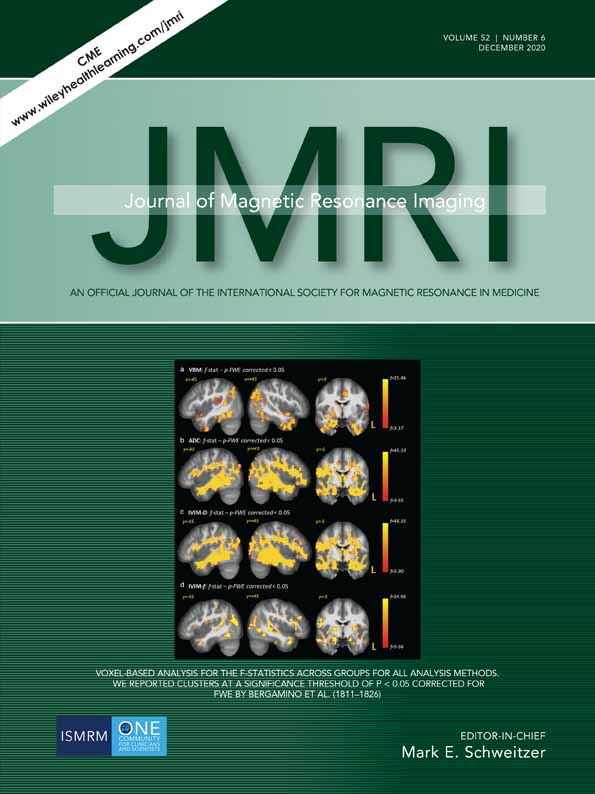MRI-Based Radiomics Models Developed With Features of the Whole Liver and Right Liver Lobe: Assessment of Hepatic Inflammatory Activity in Chronic Hepatic Disease
Level of Evidence 3Technical Efficacy Stage 2
Abstract
Background
The noninvasive assessment of hepatic inflammatory activity (HIA) is crucial for making clinical decisions and monitoring therapeutic efficacy in chronic liver disease (CLD).
Purpose
To develop MRI-based radiomics models by extracting features from the whole liver and localized regions of the right liver lobe, compare the efficiency of two radiomics models, and further develop a radiomics nomogram for the assessment of HIA in CLD.
Study Type
Retrospective.
Population
In all, 137 consecutive patients.
Field Strength/Sequence
1.5T/T2-weighted imaging.
Assessment
All patients (nonsignificant HIA, n = 98; significant HIA, n = 39) were randomly divided into a training (n = 95) and a test cohort (n = 42). Radiomics features were extracted from the regions covering the whole liver (ROI-w) and localized regions of the right liver lobe (ROI-r). Least absolute shrinkage and selection operator (LASSO) and multivariate logistic regression analyses were used to select features and develop radiomics models. A combined model fusing the valuable radiomics features with clinical-radiological predictors was developed. Finally, a radiomics nomogram derived from the combined model was developed.
Statistical Tests
Synthetic minority oversampling technique algorithm, LASSO, receiver operator characteristic curve, and calibration curve analysis were performed.
Results
The area under the curve (AUC), sensitivity, and specificity of the ROI-w radiomics model in assessing HIA were 0.858, 0.800, and 0.733, respectively. The ROI-r model were 0.844, 0.733, and 0.867, respectively. No differences were detected between the two radiomics models (P = 0.8329). The combined model fusing valuable ROI-w radiomics features, albumin, and periportal edema exhibited a promising performance (AUC, 0.911). The calibration curves showed good agreement between the actual observations and nomogram predictions.
Data Conclusion
The MRI-based radiomics models had a powerful ability to evaluate HIA and the ROI-w radiomics model was comparable to the ROI-r model. Moreover, the radiomics nomogram could be a favorable method to individually estimate HIA in CLD. J. MAGN. RESON. IMAGING 2020;52:1668–1678.
Conflicts of Interest
The authors have no conflicts of interest to disclose.




